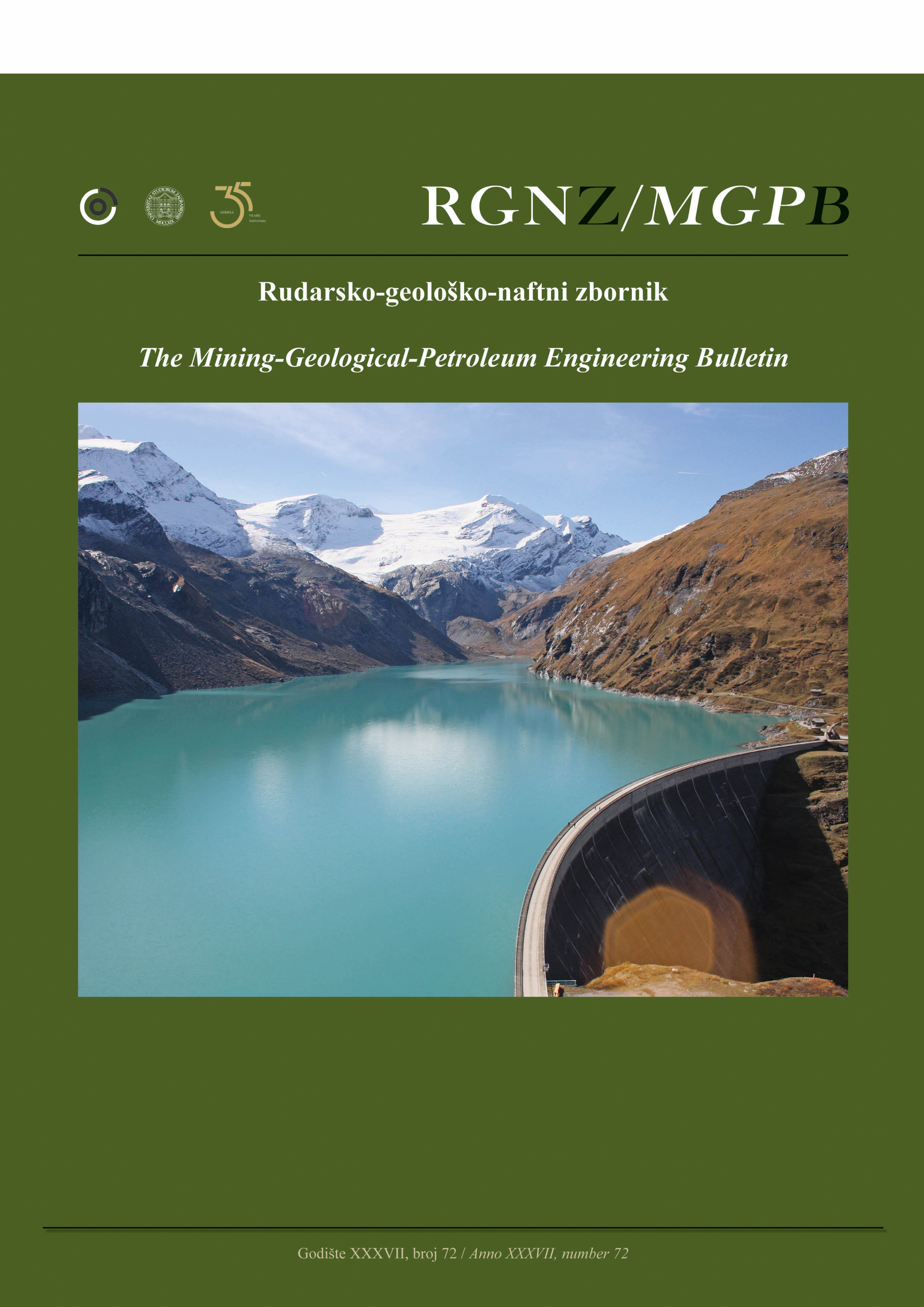Method for limiting the heating of air supplied to deep workings of coal mines
DOI:
https://doi.org/10.17794/rgn.2025.1.5Keywords:
mine workings, ventilation, energy state of rocks, thermodynamic factorsAbstract
The purpose of this paper is to substantiate the arrangement of workings that supply cooled air to the faces based on an assessment of changes in the energy state of the rock mass under the influence of mining operations. The theoretical studies were carried out based on a systematic analysis of the fundamental equations of the classical theory of thermodynamics, taking into account experimental data on rock physics and geomechanical processes occurring during mining operations. This purpose was achieved by comparing the energy state (enthalpy) of rocks in the mass intact by mining operations and the mass formed in these rocks after coal seam extraction. The authors proposed the idea of transporting refrigerant in the form of cooled air through the workings arranged in the displaced rocks behind the longwall, which are relieved of rock pressure, degassed and cooled. This makes it possible to significantly reduce cold losses on the way to the miners’ workplaces. The results of theoretical preliminary calculations confirm that the enthalpy of displaced rocks in the mined-out longwall space remains virtually unchanged regardless of the depth of mining. This confirms the validity of the idea of choosing the arrangement of the workings to save cold. The linear nature of the increase in the ratio of rock enthalpy in intact and cooled rock masses during the deepening of mining operations has been established, which proves the efficiency and prospects of the proposed method for large depths. A variant of coal seam preparation and mining is proposed to ensure the saving of the cold resource by arranging workings in displaced and cooled rocks.
Downloads
Published
Issue
Section
License
Copyright (c) 2024 Viktor Kostenko, Iaroslav Liashok, Olha Bohomaz, Maryna Tavrel, Tetiana Kostenko

This work is licensed under a Creative Commons Attribution 4.0 International License.
Creative Commons-BY
Authors who publish with this journal agree to the following terms:
In agreeing this form, you certify that:
- You read the ethical codex of the RGN zbornik available at journal web.
- You submitted work is your original work, and has not previously been published and does not include any form of plagiarism.
- You own copyright in the submitted work, and are therefore permitted to assign the licence to publish to RGN zbornik.
- Your submitted work contains no violation of any existing copyright or other third party right or any material of an obscene, libellous or otherwise unlawful nature.
- You have obtained permission for and acknowledged the source of any illustrations, diagrams or other material included in the work of which you are not the copyright owner.
- You have taken due care to ensure the accuracy of the work, and that, to the best of your knowledge, there are no false statements made within it.
- All co-authors of this submitted work are aware of, and in agreement with, the terms of this licence and that the submitted manuscript has been approved by these authors.
Publication licence
You retain copyright in your submitted work, according to journal license policy (CC-BY). By signing this form you agree that RGN zbornik may publish it under the publication licence. In summary the licence allows the following:
Anyone is free:
- To copy, distribute, display, and perform the work.
- To make derivative works.
Under the following conditions:
- The original author must always be given credit.
- The work may not be used for commercial purposes.
- If the work is altered, transformed, or built upon, the resulting work may only be distributed under a licence identical to this one.
Exceptions to the licence
In addition to publishing the work printed under the above licence, RGN zbornik will also enable the work to be visible online.
The journal editorial can change the licence rules anytime but it cannot retroactively restrict author(s) rights.


